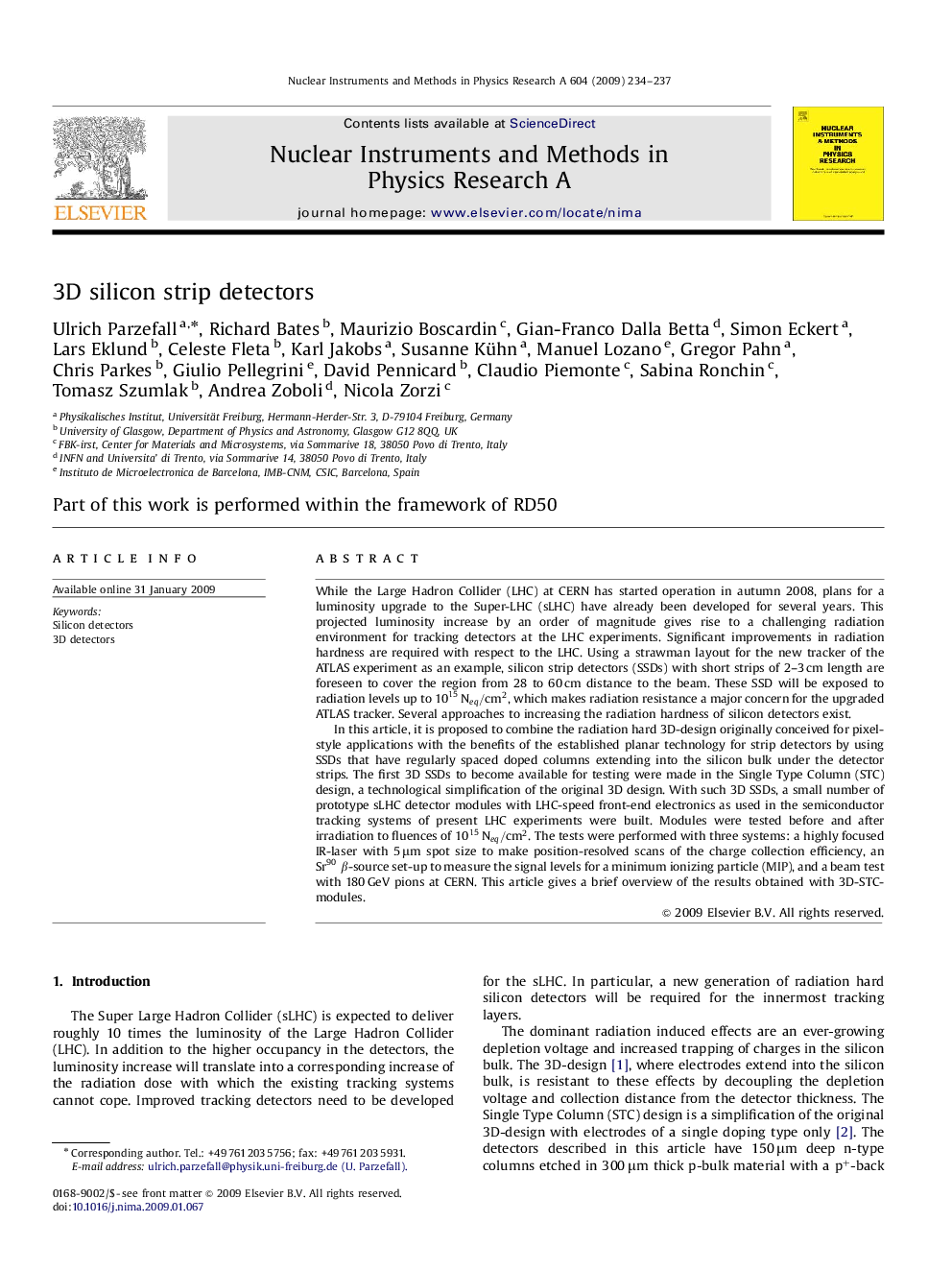| کد مقاله | کد نشریه | سال انتشار | مقاله انگلیسی | نسخه تمام متن |
|---|---|---|---|---|
| 1827860 | 1526478 | 2009 | 4 صفحه PDF | دانلود رایگان |

While the Large Hadron Collider (LHC) at CERN has started operation in autumn 2008, plans for a luminosity upgrade to the Super-LHC (sLHC) have already been developed for several years. This projected luminosity increase by an order of magnitude gives rise to a challenging radiation environment for tracking detectors at the LHC experiments. Significant improvements in radiation hardness are required with respect to the LHC. Using a strawman layout for the new tracker of the ATLAS experiment as an example, silicon strip detectors (SSDs) with short strips of 2–3 cm length are foreseen to cover the region from 28 to 60 cm distance to the beam. These SSD will be exposed to radiation levels up to 1015Neq/cm2, which makes radiation resistance a major concern for the upgraded ATLAS tracker. Several approaches to increasing the radiation hardness of silicon detectors exist.In this article, it is proposed to combine the radiation hard 3D-design originally conceived for pixel-style applications with the benefits of the established planar technology for strip detectors by using SSDs that have regularly spaced doped columns extending into the silicon bulk under the detector strips. The first 3D SSDs to become available for testing were made in the Single Type Column (STC) design, a technological simplification of the original 3D design. With such 3D SSDs, a small number of prototype sLHC detector modules with LHC-speed front-end electronics as used in the semiconductor tracking systems of present LHC experiments were built. Modules were tested before and after irradiation to fluences of 1015Neq/cm2. The tests were performed with three systems: a highly focused IR-laser with 5μm spot size to make position-resolved scans of the charge collection efficiency, an Sr90β-source set-up to measure the signal levels for a minimum ionizing particle (MIP), and a beam test with 180 GeV pions at CERN. This article gives a brief overview of the results obtained with 3D-STC-modules.
Journal: Nuclear Instruments and Methods in Physics Research Section A: Accelerators, Spectrometers, Detectors and Associated Equipment - Volume 604, Issues 1–2, 1 June 2009, Pages 234–237